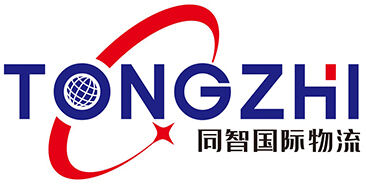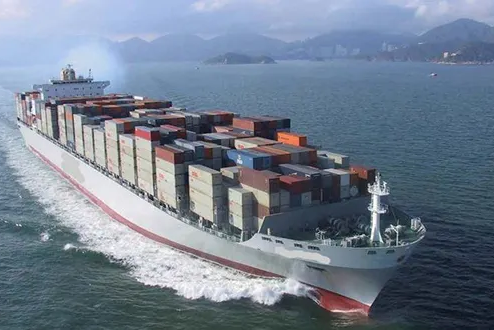Η μεταφορά σε κοντέινερ είναι η πλάτη του παγκόσμιου εμπορίου, επιτρέποντας την αποτελεσματική και ασφαλή μεταφορά εμπορευμάτων σε όλο τον κόσμο. Με την συνεχώς αυξανόμενη ζήτηση για διεθνές εμπόριο, οι επιχειρήσεις πρέπει να κατανοούν τις λεπτομέρειες της μεταφοράς σε κοντέινερ για να βελτιστοποιήσουν τις λογιστικές τους λειτουργίες. Αυτό το άρθρο εξερευνά τις καλύτερες πρακτικές και τις κύριες συνθήκες για την βελτιστοποίηση της αποδοσης στην μεταφορά σε κοντέινερ.
Κατανόηση της Μεταφοράς σε Κοντέινερ
Η μεταφορά σε πλοία με κοντέινερ εμπεριστατώνει τη μεταφορά εμπορευμάτων σε μεγάλα, προτυποποιημένα κοντέινερ. Αυτά τα κοντέινερ διαθέτουν διάφορες μεγέθεις, με τα πιο κοινά να είναι τα κοντέινερ 20 πόδια και 40 πόδια. Η προτυποποίηση επιτρέπει απλή μεταφορά μεταξύ πλοίων, καμιών και τρένων, κάνοντάς τη μεταφορά ευέλικτη και αποτελεσματική.
Βασικά οφέλη της μεταφοράς με κοντέινερ
Αποτελεσματικότητα: Τα κοντέινερ σχεδιάστηκαν για εύκολη χειρισμού και στοίβαξη, που επιταχύνει τη διαδικασία φόρτωσης και άφορτωσης στα λιμάνια. Αυτή η αποτελεσματικότητα μεταφράζεται σε ταχύτερους χρόνους μεταφοράς και μειωμένες δαπάνες.
Ασφάλεια: Τα εμπορεύματα που μεταφέρονται σε κοντέινερ είναι λιγότερο ευάλωτα σε ζημιές και κλοπή. Η ανθεκτική κατασκευή των κοντεινερ προσφέρει άριστη προστασία από τα στοιχεία και τις πιθανές κλοπές.
Οικονομική αποτελεσματικότητα: Η μεταφορά με κοντέινερ είναι γενικά πιο οικονομική από άλλες μορφές μεταφοράς, ειδικά για διεθνείς μεταφορές μεγάλων αποστάσεων. Η δυνατότητα να συγκεντρώνονται πολλές αποστολές σε ένα κοντέινερ μειώνει επιπλέον τις δαπάνες.
Πολυειδικότητα: Οι περιέχοντες μπορούν να μεταφέρουν μια ευρεία γama από αγαθά, από φυσικά υλικά και μηχανήματα έως περισσότερο ευαίσθητα αγαθά και τελικά προϊόντα. Ειδικοί περιέχοντες, όπως οι ψυγείς (reefers), καλύπτουν ειδικές ανάγκες όπως τον έλεγχο της θερμοκρασίας.
Καλύτερες Πρακτικές για την Μεταφορά με Περιέχοντες
Επιλογή του Σωστού Τύπου Περιέχοντα
Η επιλογή του κατάλληλου τύπου περιέχοντα είναι κρίσιμη για την εξασφάλιση της ασφαλούς και αποτελεσματικής μεταφοράς αγαθών. Οι κανονικοί ξεροί περιέχοντες είναι κατάλληλοι για τα περισσότερα είδη φορτίου, αλλά οι επιχειρήσεις θα πρέπει να σκεφτούν να χρησιμοποιήσουν ειδικούς περιέχοντες για συγκεκριμένες ανάγκες:
Ψυγείς Περιέχοντες (Reefers): Για φθορούμενα αγαθά που απαιτούν έλεγχο θερμοκρασίας.
Περιέχοντες Open-Top: Για μεγάλα φορτία που δεν μπορούν να χωρέσουν σε κανονικούς περιέχοντες.
Περιέχοντες Flat Rack: Για βαριά και μεγάλα αγαθά όπως μηχανήματα και αυτοκίνητα.
Βελτιστοποιήστε τη χρήση κοντέινερ
Η μέγιστη χρήση του διαθέσιμου χώρου μέσα σε έναν περιέχοντα μπορεί να μειώσει σημαντικά τις δαπάνες μεταφοράς. Οι επιχειρήσεις θα πρέπει:
Σωστή Μεταφορά και Στοίβαξη Αγαθών: Να βεβαιωθείτε ότι τα αγαθά είναι συσσωρευμένα στενά και ασφαλώς για να μην μετακινηθούν κατά τη διάρκεια της μεταφοράς.
Χρήση Παλετών και Σκιδών: Επιτρέπουν εύκολη χειρισμό και αποτελεσματική χρήση του χώρου.
Ισορροπία Κατανομής Βάρους: Διανέμετε ομοιόμορφα το βάρος για να διατηρηθεί η σταθερότητα και να προληφθεί ζημιά.
Εφαρμογή Προηγμένων Συστημάτων Ακολούθησης
Η πραγματικόχρονη ακολούθηση και παρακολούθηση αποστολών προσφέρει αξιόλογες εισβολές και ενισχύει την ορατότητα κατά τη διάρκεια της μεταφοράς. Τα προηγμένα συστήματα ακολούθησης προσφέρουν:
Ενημερώσεις Τοποθεσίας Πραγματικού Χρόνου: Να διαβεβαιώνεται τα επιχειρήματα για τη θέση και την κατάσταση των αποστολών τους.
Παρακολούθηση Κατάστασης: Να διασφαλίζεται ότι τα αγαθά ευαίσθητα στη θερμοκρασία παραμένουν στο απαιτούμενο εύρος.
Προϊσταμένη Ανάλυση: Να προβλέπεται πιθανές καθυστέρησεις και να βελτιώνονται οι δρομολόγιες για γρηγορότερη παράδοση.
Να Εξασφαλίσετε Συμμόρφωση Με Νομοθεσίες
Η συμμόρφωση με διεθνείς κανονισμούς μεταφοράς είναι απαραίτητη για να αποφευχθούν καθυστερήσεις και τιμές ποινών. Τα επιχειρήματα θα πρέπει:
Διατηρήστε Ενημερωμένος Για τις Κανονισμούς Εμπορίου: Διασφαλίστε ότι είστε ενημερωμένος για τους νόμους περί εισαγωγών/εξαγωγών και τις απαιτήσεις των δασμοειδών για κάθε προορισμό.
Ετοιμάστε Ακριβή Εγγραφή: Διασφαλίστε ότι όλες οι απαραίτητες εγγραφές, όπως τα λογαριασμού φορτώσεων, τα πιστοποιητικά προέλευσης και τα δασμοειδή δηλώσεις, είναι σωστά συμπληρωμένες και υποβληθούν εγγύς.
Συνεργασθείτε με Εμπειρούς Δασμοειδείς Μεσιτές: Επιταχύνετε την έγκυρη διαδικασία δασμοειδούς και μειώστε τον κίνδυνο προβλημάτων σύμφωνα με τους κανονισμούς.
Χρησιμοποιήστε Τεχνολογία για Αυξημένη Αποτελεσματικότητα
Η τεχνολογία έχει κρίσιμο ρόλο στην βελτίωση των λειτουργιών μεταφοράς σταθμών. Οι επιχειρήσεις θα πρέπει να εισάγουν:
Λογισμικό Διαχείρισης Μεταφορών: Σταθεροποιήστε τις διαδικασίες κράτησης, εγγραφών και παρακολούθησης.
Αυτοματοποιημένα Συστήματα Διαχείρισης Φορτίου: Ταχυνάτε τις διαδικασίες φόρτωσης και άφορτωσης στους λιμένες.
Τεχνολογία Blockchain: Βελτιώστε τη διαφάνεια και την ασφάλεια στην αλυσίδα εφοδιασμού με την παροχή αδιάβλεπτου καταχωρισμού συναλλαγών και κινήσεων.
Κύριε Παράγοντες για τις Μεταφορές Σταθμών
Διαχείριση Κόστους
Τα κόστη μεταφοράς μπορούν να επηρεάσουν σημαντικά την καθαρή κερδικότητα ενός επιχειρήματος. Κλειδιά στρατηγικές για τη διαχείριση των κοστών περιλαμβάνουν:
Συγχώνευση Αποστολών: Συνδυάστε πολλές αποστολές σε ένα δοχείο για να ωφεληθείτε από οικονομικές κλίμακες.
Διαπραγμάτευση Συμβάσεων: Εξασφαλίστε ευνοϊκούς ρυθμούς και όρους με γραμμές μεταφοράς και προϊστάμενους φορτών.
Βελτιστοποίηση Διαδρομών: Επιλέξτε τις πιο αποτελεσματικές και οικονομικές διαδρομές για να ελαχιστοποιήσετε τους χρόνους μεταφοράς και να μειώσετε την κατανάλωση καύσιμων.
Διαχείριση Κινδύνων
Η διαχείριση κινδύνων που σχετίζονται με τη μεταφορά σε δοχεία είναι ζωτικής σημασίας για να εξασφαλιστεί η ασφαλής και εντός χρονοδιαγράμματος παράδοση των εμπορευμάτων. Λάβετε υπόψη τα εξής:
Κάλυψη Ασφάλισης: Προστατεύστε από πιθανές
απώλειες λόγω ζημιών, κλοπής ή καθυστερήσεων.
Σχεδιασμός Ενδείξεων: Αναπτύξτε σχέδια για να αντιμετωπίσετε απροσδόκητες διακοπές, όπως άλεες στα λιμάνια ή φυσικές καταστροφές.
Κανονικοί Ελέγχοι: Διεξάγετε ελέγχους των διαδικασιών μεταφοράς και των εταίρων για να αναγνωρίσετε και να μειώσετε τους κινδύνους.
Διαχειριστικές Πρακτικές
Η βιωσιμότητα γίνεται ολοένα και πιο σημαντική στην παγκόσμια λογιστική. Τα επιχειρήματα μπορούν να εφαρμόσουν φιλικές πρακτικές για το περιβάλλον όπως:
Χρήση Πλοίων με Οικονομική Καύσιμα: Επιλέξτε γραμμές μεταφοράς που χρησιμοποιούν σύγχρονα πλοία με οικονομική καύσιμα για να μειώσετε τις εκπομπές άνθρακα.
Εφαρμογή Πράσινων Λύσεων Πακέτων: Χρησιμοποιήστε ανακυκλώσιμα και βιοδιασπώμενα υλικά πακέτων για να ελαχιστοποιήσετε την περιβαλλοντική επίδραση.
Αντιστάθμιση Εκπομπών Άνθρακα: Συμμετάσχετε σε προγράμματα αντιστάθμισης άνθρακα για να διαδικάσετε το περιβαλλοντικό αποτύπωμα των δραστηριοτήτων μεταφοράς.
Συμπέρασμα
Η μεταφορά με κοντέινερ είναι καίριο συστατικό του διεθνούς εμπορίου, προσφέροντας αποτελεσματικότητα, ασφάλεια και οικονομική αποτελεσματικότητα. Με την εφαρμογή καλύτερων πρακτικών όπως η επιλογή του κατάλληλου τύπου κοντέινερ, η βελτιστοποίηση της χρήσης κοντεινέρ, η χρήση προηγμένων συστημάτων παρακολούθησης, η εγγύηση της συμμόρφωσης με τους κανονισμούς και η ανάληψη τεχνολογίας, οι επιχειρήσεις μπορούν να μεγιστοποιήσουν τα οφέλη της μεταφοράς με κοντέινερ. Επιπλέον, η διαχείριση κόστους, η μείωση των κινδύνων και η εφαρμογή βιώσιμων πρακτικών είναι κρίσιμες για την διατήρηση ανταγωνιστικής προνομιακής θέσης στην παγκόσμια αγορά.







































